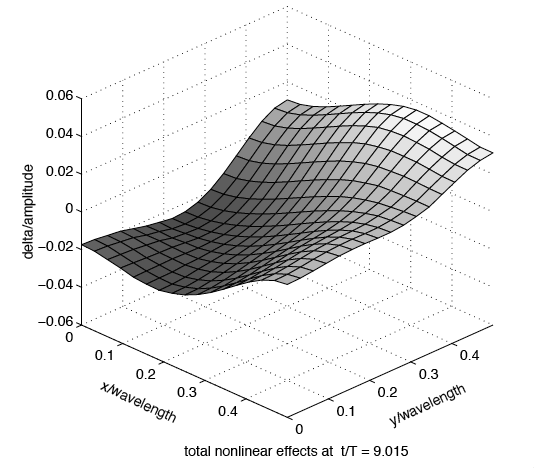Three-dimensional, nonlinear, viscous wave interactions in a sloshing tank
ABSTRACT: A numerical simulation method for the unsteady, incompressible, Navier-Stokes equations applied to viscous free-surface flows has been developed and tested on three dimensional (3D) and two-dimensional (2D) nonlinear, finite-amplitude standing waves in a rectangular domain. Results are presented for a 3D simulation of two monochromatic waves that are initially superposed at a 90 degree angle. A comparison of 3D simulation results with 2D results provides a basis for analyzing nonlinear wave-wave interaction effects. Viscous damping effects are compared with theory, and wave-wave interactions are analyzed by decomposing into separate nonlinear effects.
EXTRACT: Figure 2.

Figure 2: Total surface deformation (3D – superposed 2D)
ACKNOWLEDGMENTS:: Supported by the Fluid Dynamics Program, Mechanics and Energy Conversion Division, Office of Naval Research, through Grant N00014-94-1-0190.
UPDATE: The results in the attached paper include a fundamental flaw in the analysis. The development of waves on the orthogonal axis, although expected in the real world, was entirely numerical in the code. That is, a perfectly symmetric solver with perfectly symmetric initial and boundary conditions would not have extracted energy into an axis orthogonal to the sloshing. However, our solver employed an Alternating Direction Implicit method, which creates an asymmetric bias in the truncation error.
